Effect of Joint Clearance on Landing Gear Retraction Failure
Abstract
1. Introduction
2. Backgrounds
2.1. Target System and Retraction/Extension Cycles
- Down Lock: process of locking or releasing while the main landing gear is fully down,
- Moving Up: process of raising of the main landing gear while its full extension locking is released,
- Moving Down: process of lowering of the main landing gear while its full extension locking is released,
- Up Lock: process of locking or releasing while the main landing gear is fully up.
2.2. Monte Carlo Simulation
2.3. Sensitivity Analysis
3. Modeling Approach
3.1. Representation of a Point
3.2. Technique of Considering Joint Clearances
3.3. Amplification Index Method
4. Results and Discussion
4.1. Coordinating Joints
4.2. Calibration
4.3. Sensitivity Analysis
- #2: Locking pin,
- #3: Short link inner bearing,
- #4: Rotating part where sidestay upper arm and locking lever interlock,
- #5: Short link outer bearing.
4.4. Validation
5. Conclusions
Author Contributions
Funding
Institutional Review Board Statement
Informed Consent Statement
Data Availability Statement
Conflicts of Interest
Nomenclature
| Aik | Amplification index of joint k corresponding to the clearance of joint i |
| AiP | plunger amplification index corresponding to the clearance of joint i |
| I | unit matrix |
| n | number of joints of geometric models |
| n1 | number of repetitions at each level |
| n2 | number of levels for each variable of LHS design |
| Si | i-th first-order index |
| Sti | i-th total-order Index |
| β | correction factor for the change in the amplification rate in the course leading to the plunger after the n-th joint |
| εik | displacement of joint k when there is a clearance in joint i |
| θ | angle between two links |
| normal vector of the plane |
References
- Knowles, J.A.C.; Krauskopf, B.; Lowenberg, M.H. Numerical Continuation Applied to Landing Gear Mechanism Analysis. J. Aircr. 2011, 48, 1254–1262. [Google Scholar] [CrossRef][Green Version]
- Yin, Y.; Hong, N.; Huajin, N.; Ming, Z. Reliability Analysis of Landing Gear Retraction System Influenced by Multifactors. J. Aircr. 2016, 53, 713–724. [Google Scholar] [CrossRef]
- Whitney, D.E.; Lozinski, C.A.; Rourke, J.M. Industrial Robot Forward Calibration Method and Results. J. Dyn. Syst. Meas. Control. Trans. ASME 1986, 108, 1–8. [Google Scholar] [CrossRef]
- Roth, Z.; Mooring, B.; Ravani, B. An Overview of Robot Calibration. IEEE J. Robot. Autom. 1987, 3, 377–385. [Google Scholar] [CrossRef]
- Khalil, W.; Caenen, J.L.; Enguehard, C. Identification and Calibration of the Geometric Parameters of Robots. In Experimental Robotics I; Springer: Berlin/Heidelberg, Germany, 1990; pp. 528–538. [Google Scholar]
- Jang, J.H.; Kim, S.H.; Kwak, Y.K. Calibration of geometric and non-geometric errors of an industrial robot. Robotica 2001, 19, 311–321. [Google Scholar] [CrossRef]
- Qiao, G.; Weiss, B.A. Quick health assessment for industrial robot health degradation and the supporting advanced sensing development. J. Manuf. Syst. 2018, 48, 51–59. [Google Scholar] [CrossRef] [PubMed]
- Judd, R.; Knasinski, A. A technique to calibrate industrial robots with experimental verification. IEEE Trans. Robot. Autom. 1990, 6, 20–30. [Google Scholar] [CrossRef]
- Duelen, G.; Schröer, K. Robot calibration—Method and results. Robot. Comput. Manuf. 1991, 8, 223–231. [Google Scholar] [CrossRef]
- Jawale, H.P.; Thorat, H.T. Investigation of Positional Error in Two Degree of Freedom Mechanism With Joint Clearance. J. Mech. Robot. 2012, 4, 011002. [Google Scholar] [CrossRef]
- Chase, K.W.; Gao, J.; Magleby, S.P. Generalized 2-D Tolerance Analysis of Mechanical Assemblies with Small Kinematic Adjustments. J. Des. Manuf. 1995, 5, 263–274. [Google Scholar] [CrossRef]
- Ting, K.-L.; Zhu, J.; Watkins, D. The effects of joint clearance on position and orientation deviation of linkages and manipulators. Mech. Mach. Theory 2000, 35, 391–401. [Google Scholar] [CrossRef]
- Tsai, M.-J.; Lai, T.-H. Kinematic sensitivity analysis of linkage with joint clearance based on transmission quality. Mech. Mach. Theory 2004, 39, 1189–1206. [Google Scholar] [CrossRef]
- Tsai, M.-J.; Lai, T.-H. Accuracy analysis of a multi-loop linkage with joint clearances. Mech. Mach. Theory 2008, 43, 1141–1157. [Google Scholar] [CrossRef]
- Liu, T.; Li, Z.-M.; Jin, S.; Chen, W. A Variation Analysis Method for Linkage Mechanism with Consideration of Joint Clearance and Deformation. Int. J. Precis. Eng. Manuf. 2018, 19, 1495–1506. [Google Scholar] [CrossRef]
- Shapiro, S.S.; Gross, A.J. Statistical Modeling Techniques; Marcel Dekker: New York, NY, USA, 1981. [Google Scholar]
- Beechcraft Corporation. Hawker 800XP Aircraft Maintenance Manual: Main Gear, Fairings and Doors—Description and Operation; TO XP-32-10-01-001; Beechcraft Corporation: Wichita, KS, USA, 2014; p. 2. [Google Scholar]
- Beechcraft Corporation. Hawker 800XP Aircraft Maintenance Manual: Reversing Valves—Description and Operation; TO XP-32-30-31-001; Beechcraft Corporation: Wichita, KS, USA, 2014; p. 1. [Google Scholar]
- Saltelli, A.; Ratto, M.; Andres, T.; Campolongo, F.; Cariboni, J.; Gatelli, D.; Saisana, M.; Tarantola, S. Global Sensitivity Analysis: The Primer; John Wiley & Sons: Chichester, UK, 2008. [Google Scholar]
- Cho, S.; Kwon, H.J.; Lee, D.; Cho, H. Study of the Effect of Joint Gap on Malfunction of Aircraft Main Landing Gear through Sensitivity Analysis. Trans. Korean Soc. Mech. Eng. A 2020, 44, 689–698. [Google Scholar] [CrossRef]
- Lynch, K.M.; Park, F. Modern Robotics—Mechanics, Planning, and Control; Cambridge University Press: Cambridge, UK, 2017. [Google Scholar]
- Beechcraft Corporation. Hawker 800XP Aircraft Maintenance Manual: Reversing Valves—Removal/Installation; TO XP-32-30-31-401; Beechcraft Corporation: Wichita, KS, USA, 2014; p. 1. [Google Scholar]
- Beechcraft Corporation. Hawker 800XP Aircraft Maintenance Manual: Side Stay Assembly—Removal/Installation; TO XP-32-10-25-401; Beechcraft Corporation: Wichita, KS, USA, 2014; pp. 1–2. [Google Scholar]
- Raytheon Aircraft Company. Hawker 800 Component Maintenance Manual: Fits and Clearnaces; TO 32-10-05; Raytheon Aircraft Company: Waltham, MA, USA, 2014; pp. 801–804. [Google Scholar]
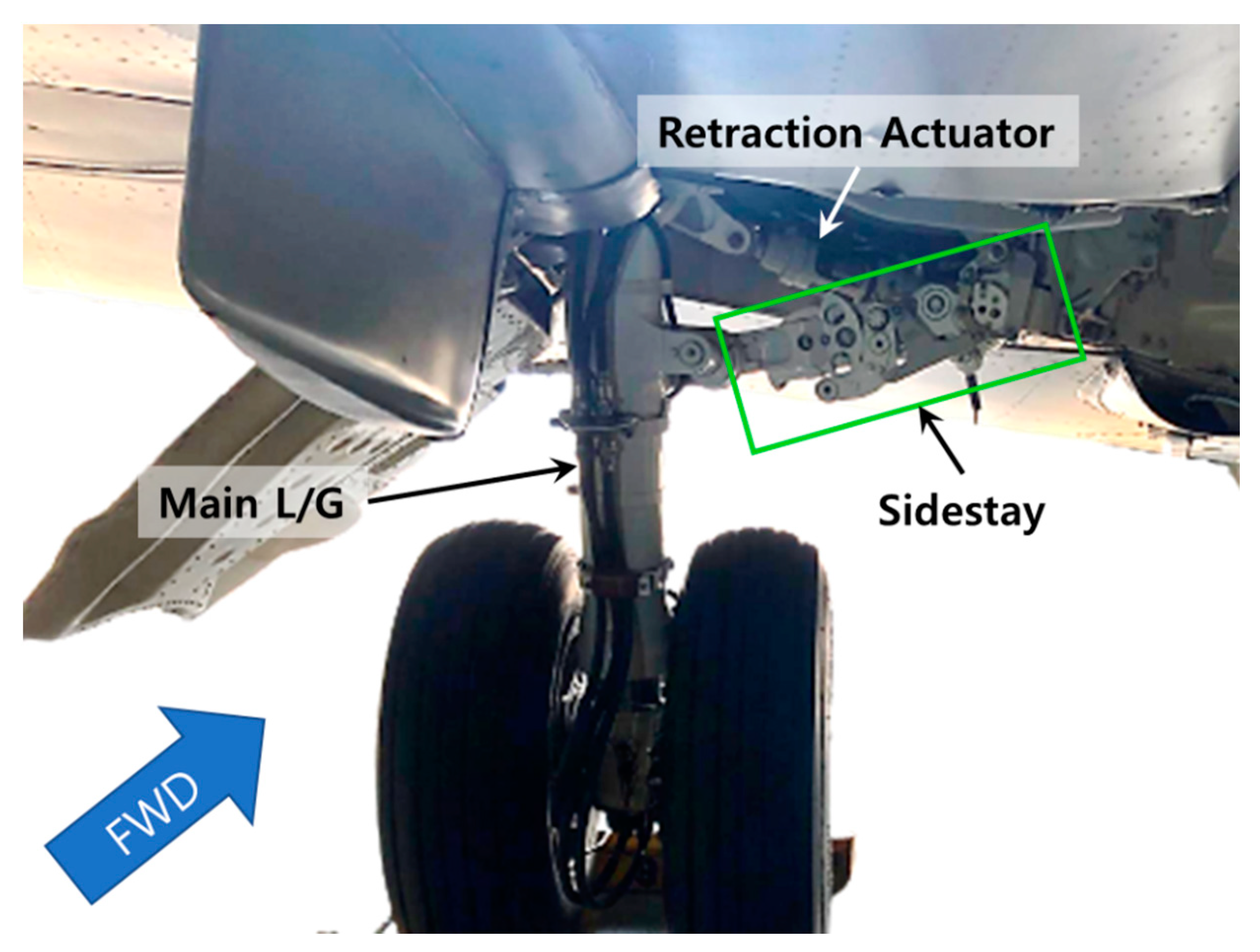

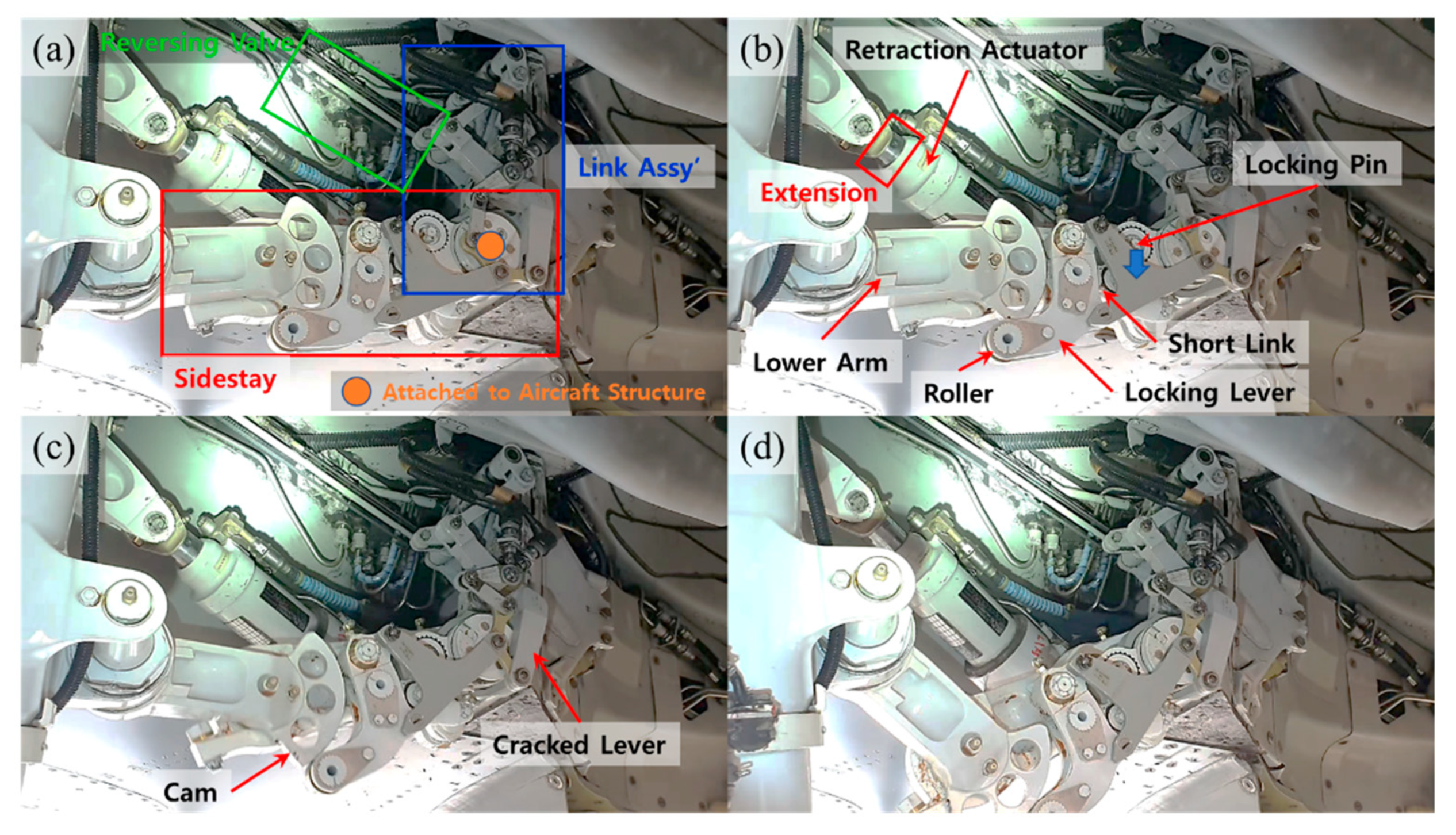
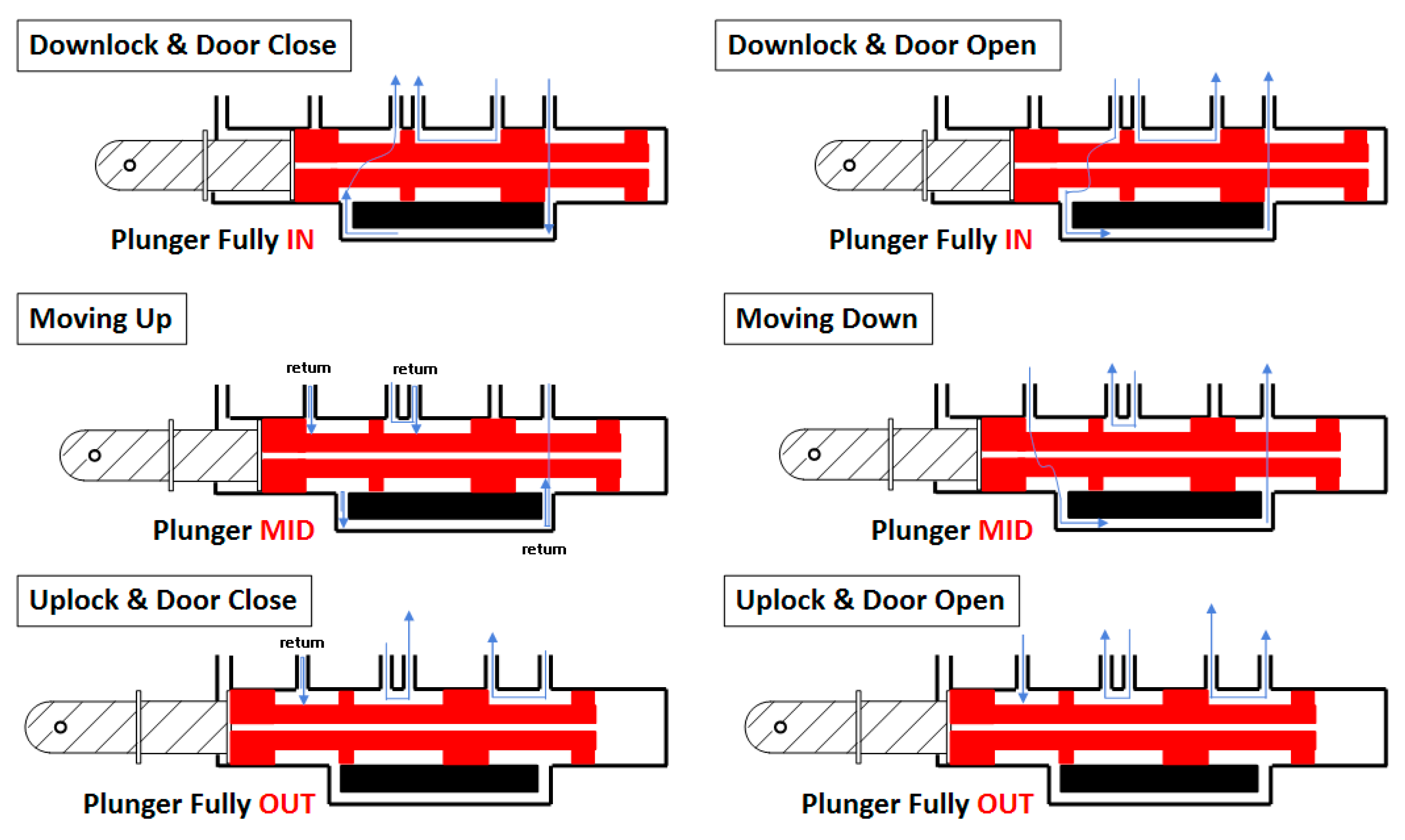

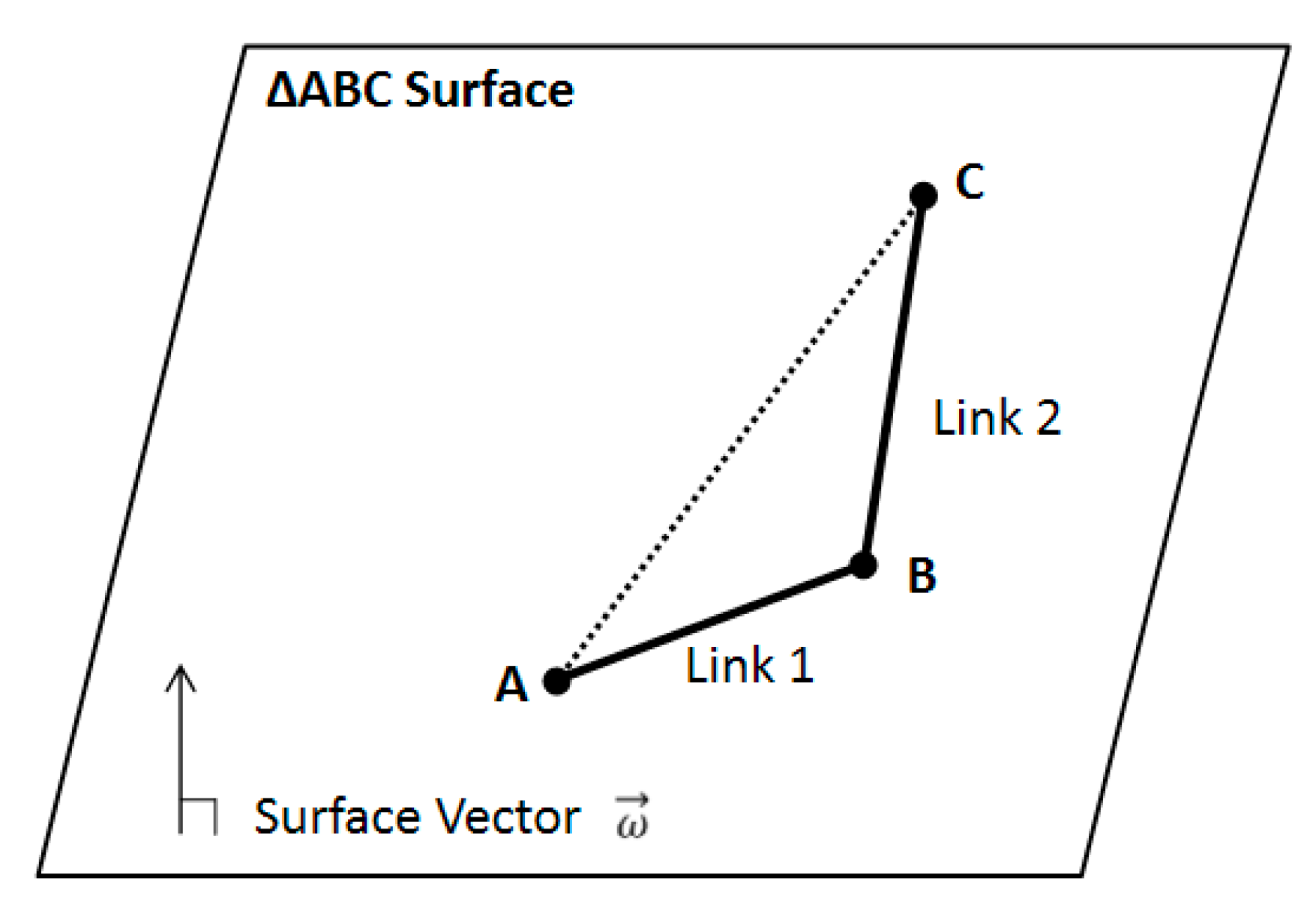
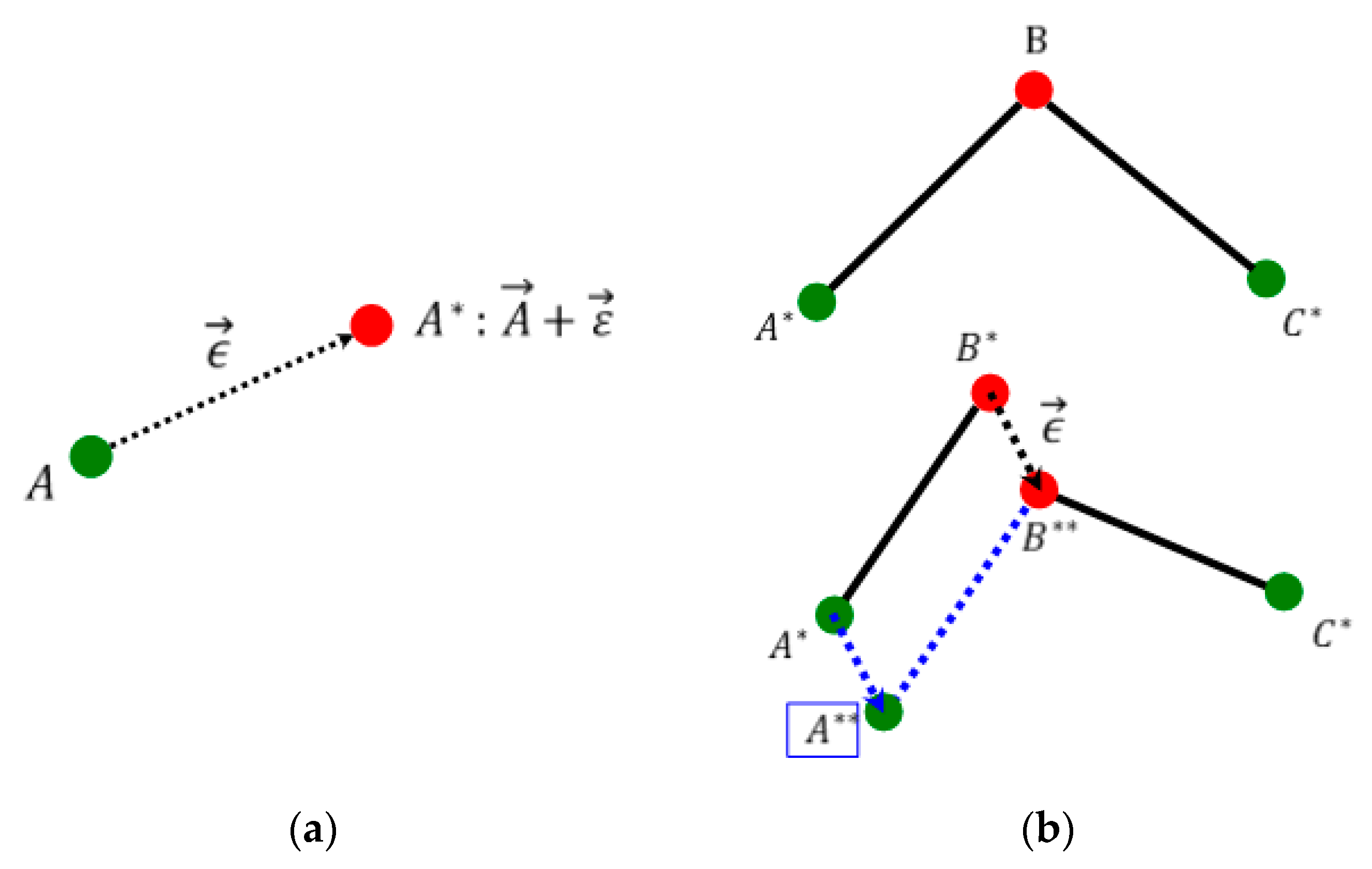
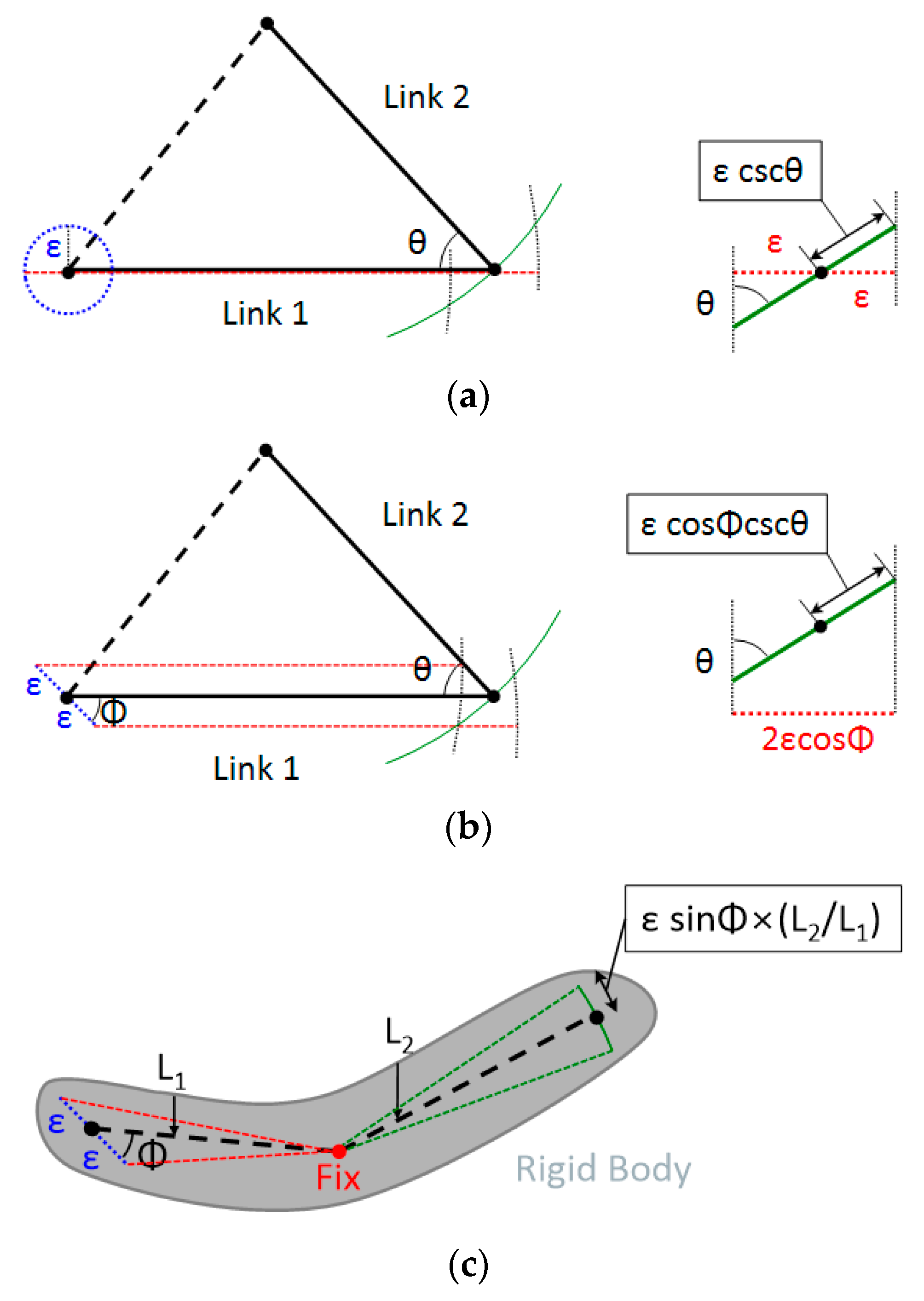
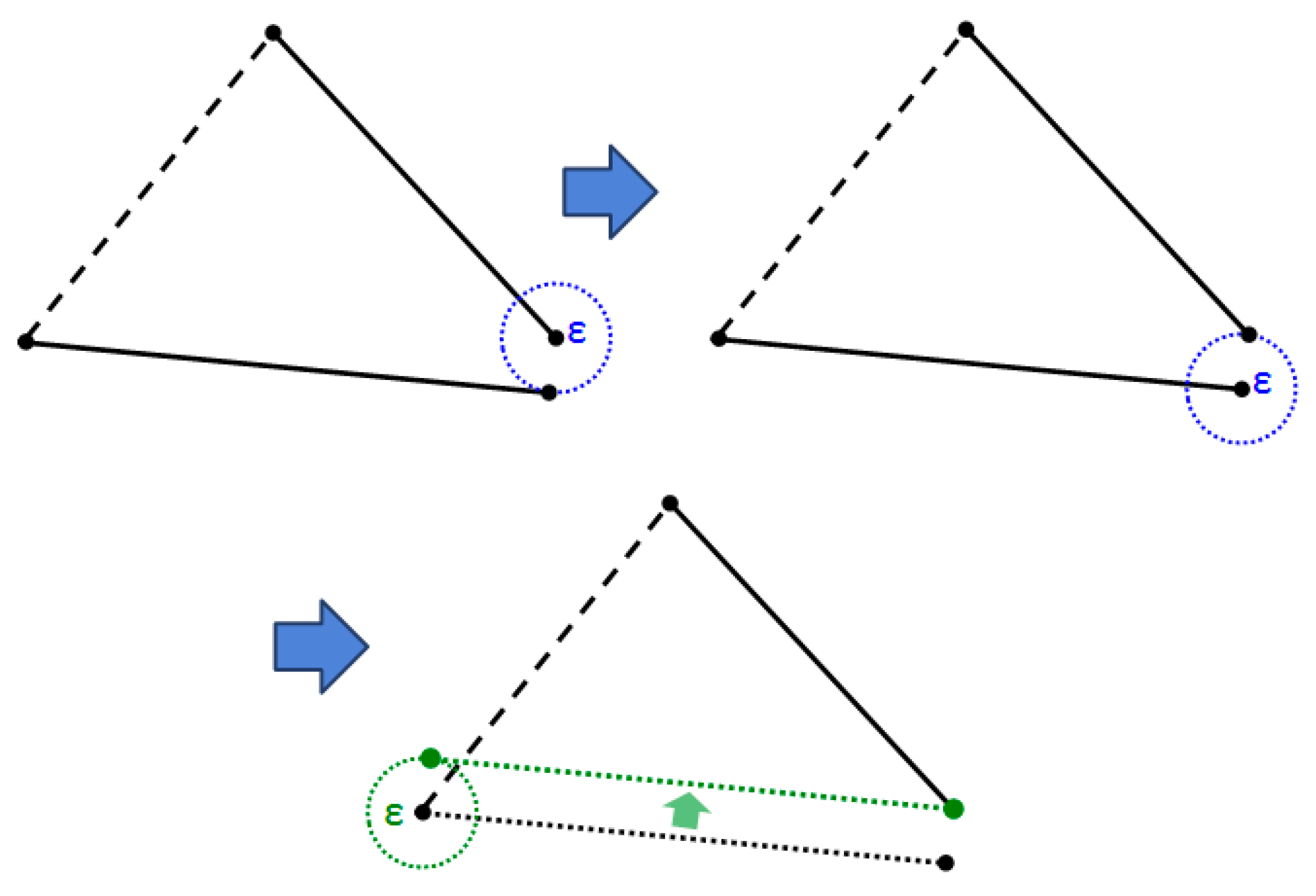
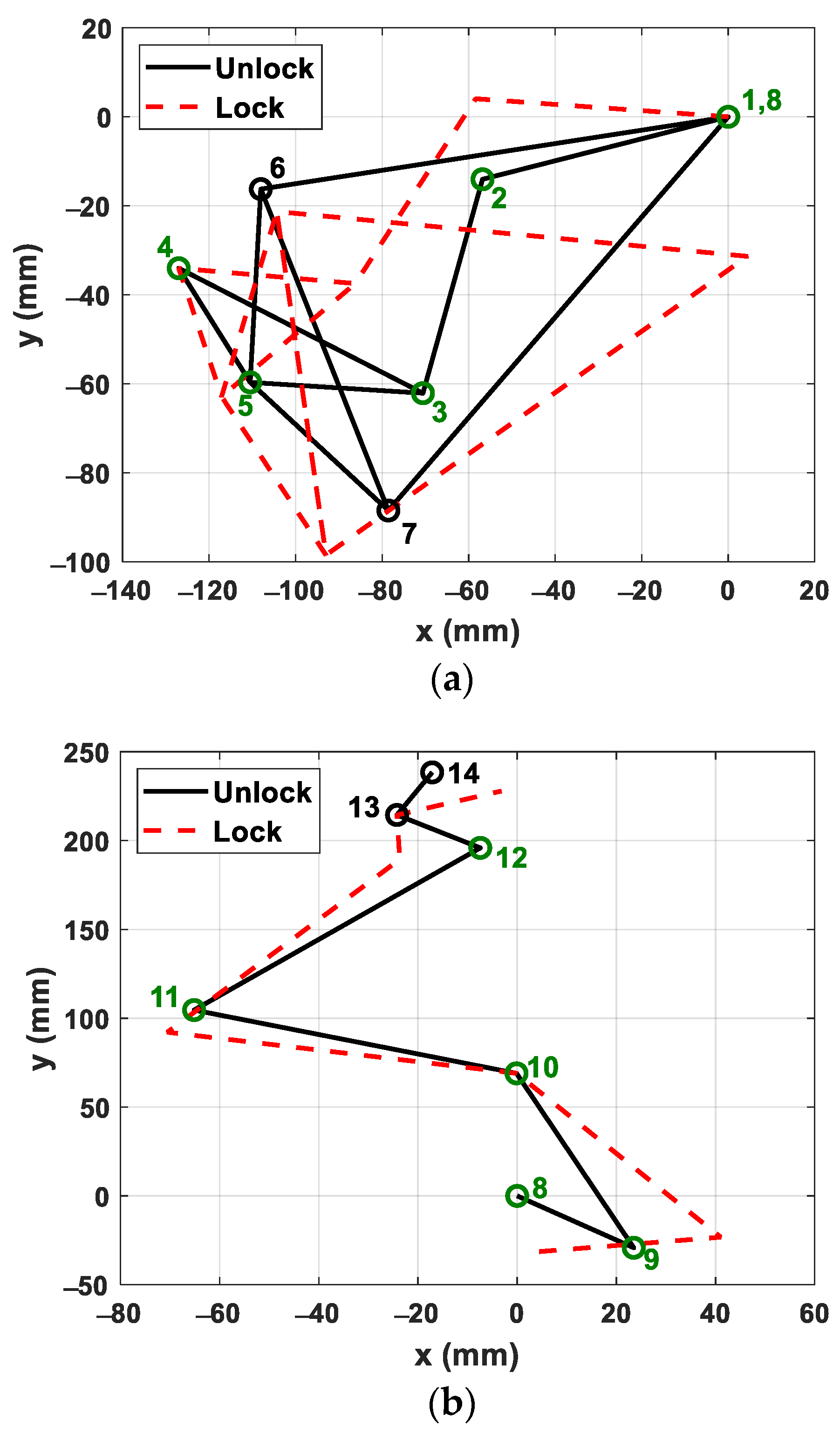
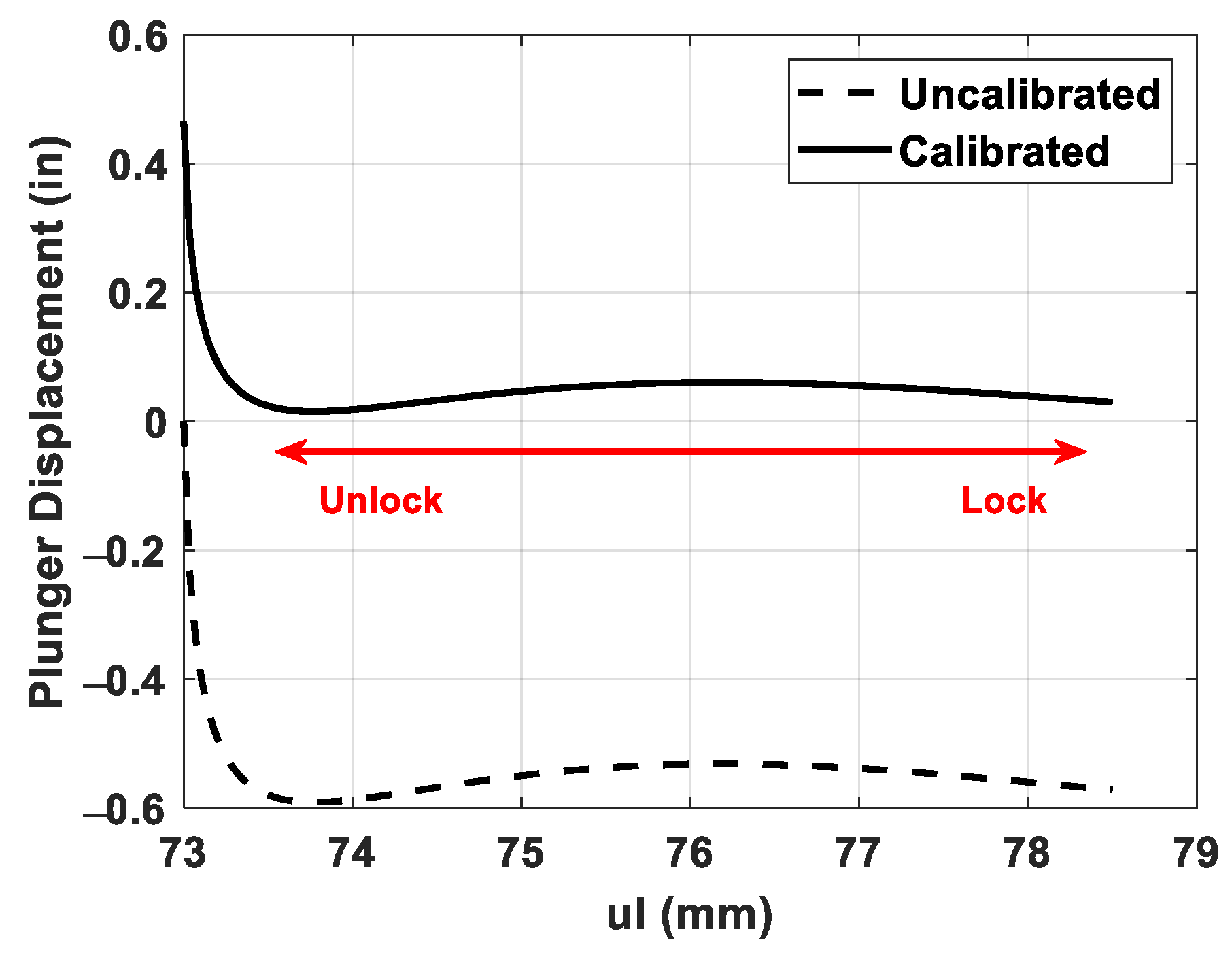

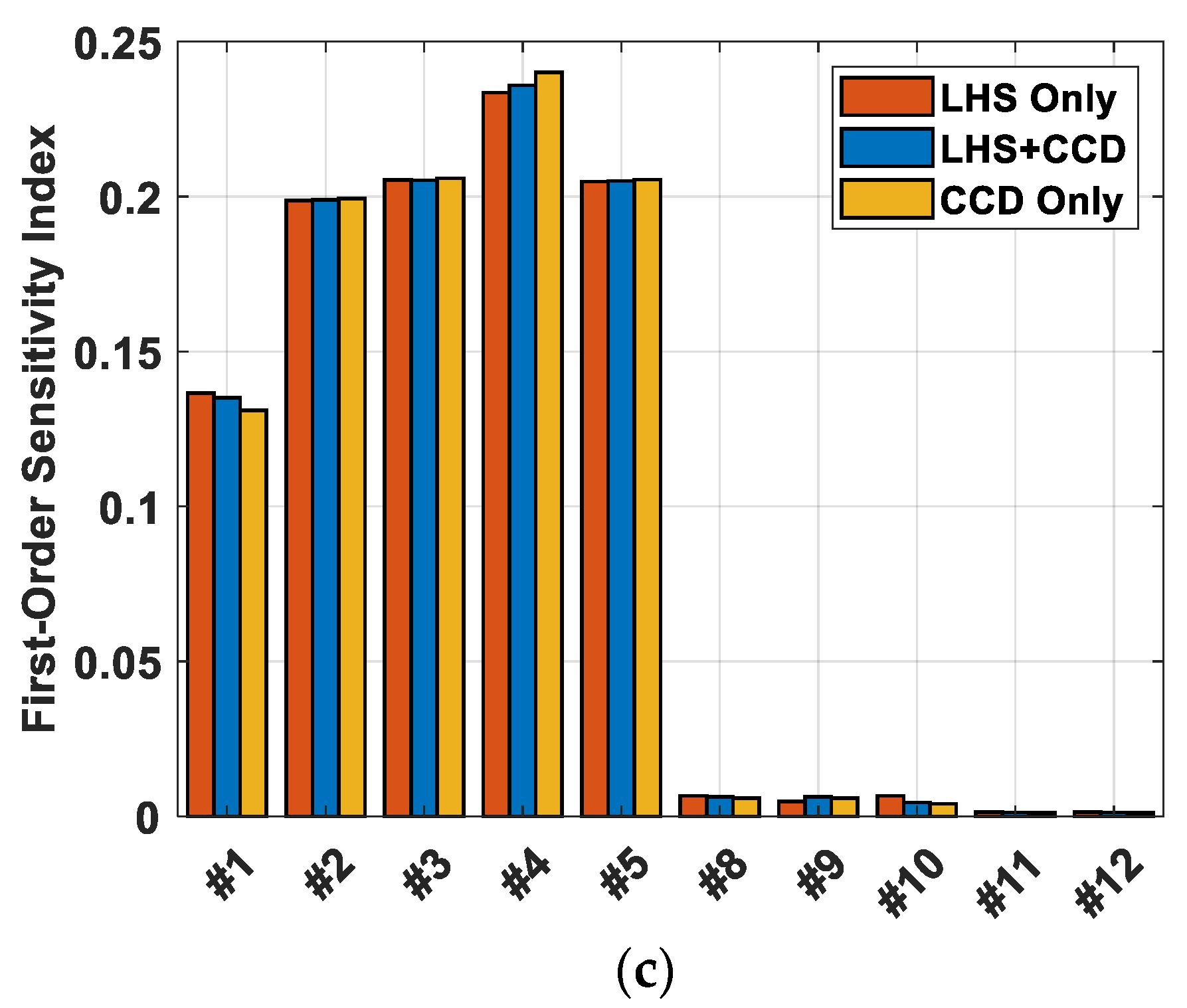
Publisher’s Note: MDPI stays neutral with regard to jurisdictional claims in published maps and institutional affiliations. |
© 2021 by the authors. Licensee MDPI, Basel, Switzerland. This article is an open access article distributed under the terms and conditions of the Creative Commons Attribution (CC BY) license (https://creativecommons.org/licenses/by/4.0/).
Share and Cite
Cho, S.; Cho, H.; Lee, D. Effect of Joint Clearance on Landing Gear Retraction Failure. Aerospace 2021, 8, 329. https://doi.org/10.3390/aerospace8110329
Cho S, Cho H, Lee D. Effect of Joint Clearance on Landing Gear Retraction Failure. Aerospace. 2021; 8(11):329. https://doi.org/10.3390/aerospace8110329
Chicago/Turabian StyleCho, Sungjoon, Hwanjeong Cho, and Dooyoul Lee. 2021. "Effect of Joint Clearance on Landing Gear Retraction Failure" Aerospace 8, no. 11: 329. https://doi.org/10.3390/aerospace8110329
APA StyleCho, S., Cho, H., & Lee, D. (2021). Effect of Joint Clearance on Landing Gear Retraction Failure. Aerospace, 8(11), 329. https://doi.org/10.3390/aerospace8110329





